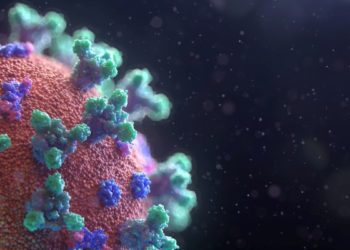Gardasil vaccine demonstrates immunogenic response at 10-year follow-up
1. A 3-dose regimen of 4-valent human papillomavirus (4vHPV) vaccine administered between the ages of 9-15 years of age was shown to be immunogenic, clinically effective, and without significant adverse effects throughout a 10-year follow-up period.
2. Immunogenic response was most robust when the vaccine was administered during the preadolescent period when compared to the adolescent period.
Evidence Rating: 1 (Excellent)
Study Rundown: Human papillomavirus (HPV) infection causes cervical cancer and genital warts. While the HPV family is comprised of 35 strains, types 16 and 18 are responsible for approximately 70% of cervical cancers and HPV-6 and -11 are responsible for 90% of genital warts. In 2007, Gardasil, or the 4vHPV vaccine, was licensed to prevent cervical, vulvar, vaginal, and anal cancer caused by HPV-16 and -18, and genital warts caused by HPV-6 and -11. In this study, researchers provide 10-year long-term follow-up data on 4vHPV vaccine effectiveness, immunogenicity, and safety. In the base study, 1661 sexually inactive male and female subjects between the ages of 9-15 years of age were randomized to an early vaccine group (EVG) who received a 3-dose course of 4vHPV vaccine or to a group given placebo. The placebo group then were then offered the vaccine at the base study’s conclusion using the same dosing schedule. This subset of the placebo group were considered to be in a catch-up vaccine group (CVG). Evaluation of HPV geometric mean titers showed immunogenicity in all vaccine recipients at 10-year follow-up, with a more robust response occurring in patients who had been vaccinated at a younger age. Evaluation of seropositivity using the chemiluminescence immunoassay (cLIA) and IgG luminescence assay (IgG LIA) at approximately 10-year follow-up showed that the majority of subjects remained seropositive for all strains, with HPV-18 having the lowest seropositivity rates. No adverse effects were noted at between 8 to 10 years of follow-up. Limitations included lack of control group and lack of assessment for anal or oropharyngeal sequelae of HPV infection throughout follow-up. This data shows that the 4vHPV vaccine is immunogenic and clinically effective 10 years after administration.
Click to read the study, published today in Pediatrics
In-Depth [prospective cohort]: A total of 1245 subjects (EVG = 821; CVG = 424) were enrolled initially in this study, and a total of 803 subjects completed the 10-year post-vaccination follow-up (EVG = 525, CVG = 275). Immunogenicity was measured through serum antibody geometric mean titers (GMTs) and percent seropositivity to HPV-6, 11, 16 and 18. Clinical effectiveness was measured by HPV-6, 11, 16 and 18-related disease or persistent infection. In terms of immunogenicity, in both cohorts, antibody responses peaked at month 7 and persisted over the 10-year follow-up period. However, in comparison to adolescents (13-15 years), preadolescents (9-12 years) had 38-64% higher GMTs at month 7, which remained 16-42% higher at 10 years. Seropositivity for HPV-6, -11 and -16 for male and female subjects using the cLIA assay or IgG LIA assay was >87% response for all subtypes. Serpositivity for HPV-18 was the lowest, ranging from 61.4% (95%54.6-67.8, cLIA assay) to 78.5% (95%CI 72.2-83.6, LIA assay) for girls and 59.6% (95%CI 52.5-66.7, cLIA assay) to 77% (95%CI 70.5-82.7, LIA assay) for boys. With respect to clinical effectiveness, no disease was observed in the form of genital warts and/or genital precancers. Of note, oropharyngeal and anal disease endpoints were not assessed in follow-up. A total of 10 cases of persistent infection (≥6 months) were detected throughout the 10-year follow-up: 4 cases of HPV-16 in girls and 6 cases of HPV-6 and -16 in boys. Among girls and boys, nonvaccine HPV types were responsible for 151 and 53 cases of persistent infection, respectively.
©2017 2 Minute Medicine, Inc. All rights reserved. No works may be reproduced without expressed written consent from 2 Minute Medicine, Inc. Inquire about licensing here. No article should be construed as medical advice and is not intended as such by the authors or by 2 Minute Medicine, Inc.







